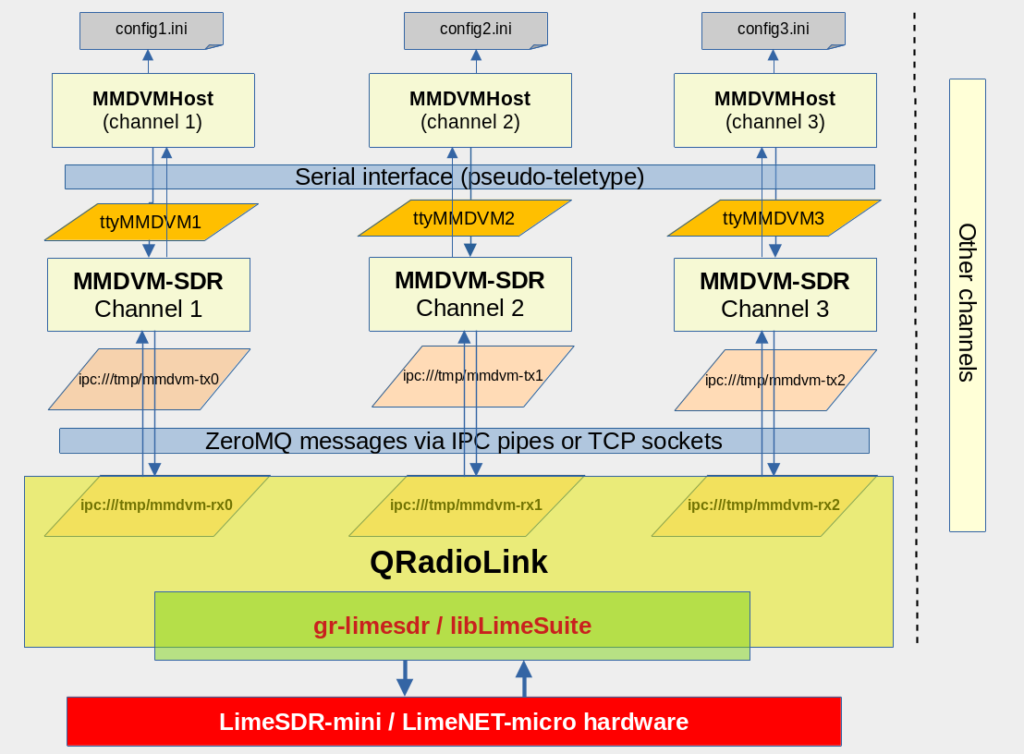Creating a Multicarrier Base Station Transceiver For DMR, YSF, M17 and more with MMDVM and LimeSDR
Thank you to Adrian, creator of the QRadioLink software for writing in and sharing with us his post about how he uses a LimeSDR as an Multi Mode Digital Voice Modem (MMDVM) for various modes including DMR, YSF and M17.
A MMDVM is usually a computing device running multiple radios, each of which is used for a separate channel with it's own filters and power amplifier hardware. Each channel can run a separate protocol if desired.
However in order to save on radio hardware, Adrian wanted to use his LimeSDR as the radio hardware in his MMDVM system. The LimeSDR is a transceiver which has enough bandwidth to implement several channels just by itself. To do this Adrian uses his MMDVM-SDR software.
His implementation runs multiple instances of MMDVM-SDR, one instance for each channel. Then a GNU Radio flowgraph with LimeSDR block connects to each of these instances, transferring data between GNU Radio and MMDVM-SDR via ZeroMQ or TCP sockets. The bulk of Adrian's post explains the architecture in detail. Adrian writes:
The setup can transmit 7 digital carriers in 200 kHz occupied spectrum, and each radio channel can be assigned to a different mode or digital voice network as configured in MMDVMHost.
This is based on the work of Jonathan Naylor G4KLX and Rakesh Peter (r4d10n).
Adrian also notes that this is still a work in progress and there are still several limitations including high latency and issues with filtering, overload and poor channel rejection.
